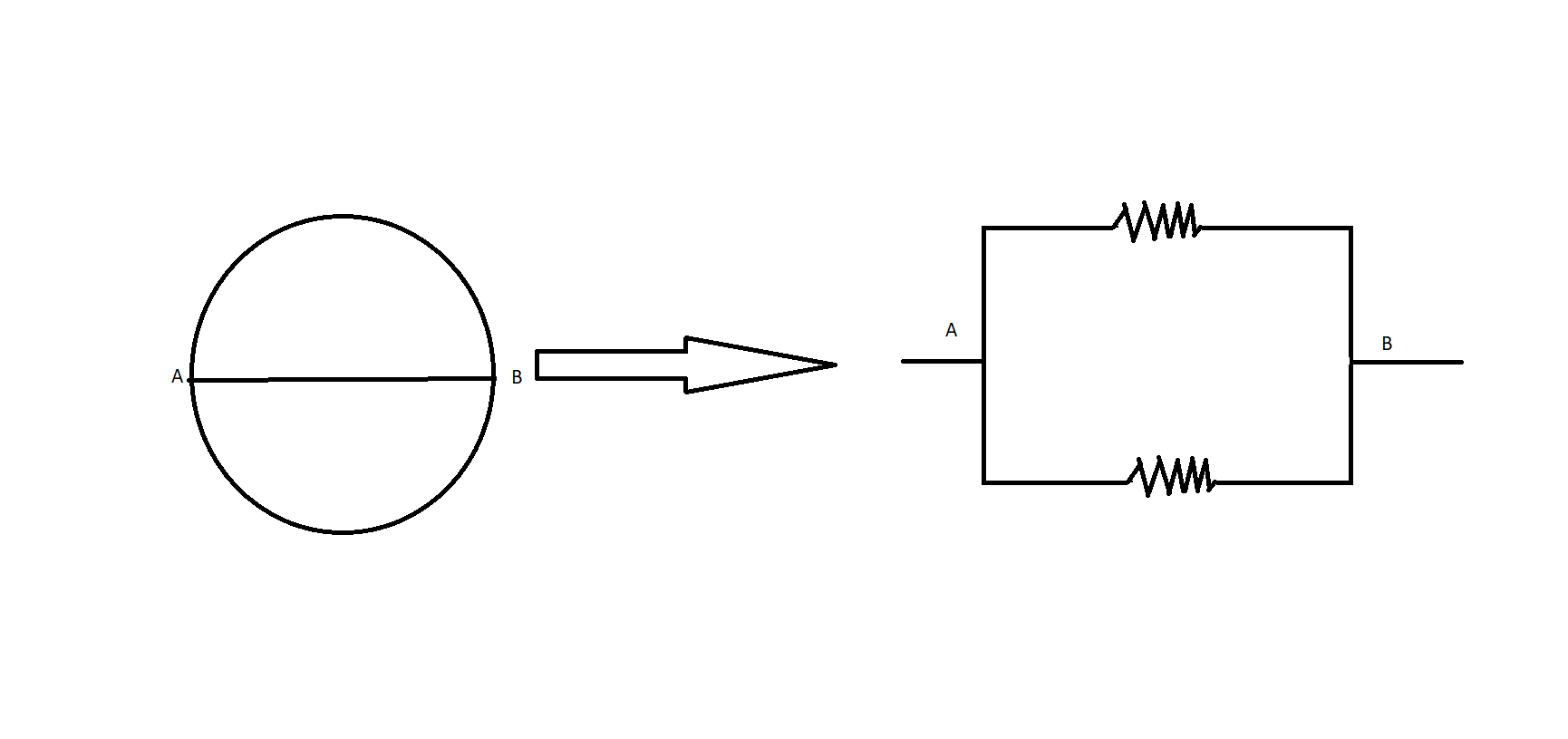Question
Question: A wire of resistance \(8\Omega \) is bent into a circle. Find the resistance across the diameter....
A wire of resistance 8Ω is bent into a circle. Find the resistance across the diameter.
Solution
To solve this question, first we need to find the resistance of the two arcs of the semicircle. This can be easily calculated if we know the relation between the resistance of wire and length of wire. After that, we can calculate the resistance across the diameter if we know that the arcs are connected in parallel.
Formulae used:
l1R1=l2R2
Where R1 and R2 are the resistance of the wire and l1 and l2 are the length of the wire.
R1=R11+R21
Where R1 and R2 are the resistance connected in parallel, and R is the net resistance of the wires connected in parallel.
Complete step by step answer:
In the question, the resistance of the wire is given to be 8Ω. Let the length of that wire be l.
It is said the wire was bent into a circle. So the length of the wire will be the circumference of the circle. Hence, the length of each half of the circle will be 2l.
So the resistance of the halves will be,
⇒l1R1=l2R2
Where R1 and R2 are the resistance of the wire and that of each half of the circle respectively and l1 and l2 are the length of the wire and each half of the circle respectively.
⇒l8=2lR
⇒R=4Ω
So the resistance of each arc will be 4Ω. The arcs of the circle can be modified as,

From the above figure, it can be concluded that the two arcs of the circle act as two parallel resistors across its diameter AB.
So the net resistance across the diameter will be,
⇒R1=R11+R21
Where R1 and R2 are the resistance of the arcs connected in parallel, and R is the net resistance of the wires across the diameter.
⇒R1=41+41
⇒R=2Ω
So the resistance across the diameter will be 2Ω.
Note: The formulae, l1R1=l2R2, (Where R1 and R2 are the resistance of the wire and l1 and l2 are the length of the wire) is used only when the wires are made up of the same materials and have the same specification. This is because the resistivity of different wire, made up of different materials, will not be the same. Here, as the cross-section of the wire is uniform throughout the individual cross-section areas of the two semicircular wires will be equal and thus get canceled.
